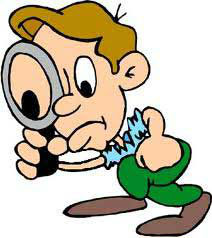Posted On: 06/06/2014 9:06:21 AM
Post# of 99453

American employers added 217,000 workers in May, a bit more than the average monthly gain over the last six months and another sign that the economy may finally be gaining momentum after a weak start to the year.
The unemployment rate was flat at 6.3 percent, the Labor Department said Friday morning in its monthly report on hiring and joblessness.
Continue reading the main story
The labor participation rate, which is closely watched by economists and the Federal Reserve as a yardstick for the overall health of the economy, was unchanged at 62.8 percent.
In recent months, the labor participation rate has been hovering at lows not seen since the late 1970s, a sign that increasing numbers of Americans have given up the search for jobs and dropped out of the work force entirely.
Over the last six months, employers have added an average of just over 200,000 people a month to their payrolls, with momentum rising recently after more anemic job gains in December and January. Average hourly earnings in May rose 5 cents, to $24.38, and are up 2.1 percent over the last 12 months. The length of the typical workweek, 34.5 hours, did not change.
The May figures do represent something of a landmark: Almost exactly five years into the recovery, total payrolls have finally surpassed where they were before the recession.
While the addition of nearly nine million jobs since hiring bottomed out in February 2010 is certainly good news, the number is still far from what is necessary to accommodate new graduates and millions of others who have entered the work force since payrolls last peaked in January 2008 at 138,365,000 jobs.
Private payrolls, which do not include public-sector workers at the federal, state and local levels, surpassed their prerecession level in March.
Even as private employers have gradually increased hiring in the recovery, government agencies and the Postal Service have continued to shed workers. Total government employment is still down by more than one million from where it was four years ago.
The consensus among economists polled by Bloomberg before the release called for a jump in payrolls of 215,000, with an increase in the unemployment rate to 6.4 percent, so with the actual data in hand, investors should be comfortable with the direction of the labor market.
On Thursday, the Labor Department reported that initial claims for unemployment benefits last week rose by 8,000, to 312,000. The four-week moving average for new claims, which tends to be less volatile and is more closely followed by economists, stood at 310,250, the best reading since June 2007.
The unemployment rate was flat at 6.3 percent, the Labor Department said Friday morning in its monthly report on hiring and joblessness.
Continue reading the main story
The labor participation rate, which is closely watched by economists and the Federal Reserve as a yardstick for the overall health of the economy, was unchanged at 62.8 percent.
In recent months, the labor participation rate has been hovering at lows not seen since the late 1970s, a sign that increasing numbers of Americans have given up the search for jobs and dropped out of the work force entirely.
Over the last six months, employers have added an average of just over 200,000 people a month to their payrolls, with momentum rising recently after more anemic job gains in December and January. Average hourly earnings in May rose 5 cents, to $24.38, and are up 2.1 percent over the last 12 months. The length of the typical workweek, 34.5 hours, did not change.
The May figures do represent something of a landmark: Almost exactly five years into the recovery, total payrolls have finally surpassed where they were before the recession.
While the addition of nearly nine million jobs since hiring bottomed out in February 2010 is certainly good news, the number is still far from what is necessary to accommodate new graduates and millions of others who have entered the work force since payrolls last peaked in January 2008 at 138,365,000 jobs.
Private payrolls, which do not include public-sector workers at the federal, state and local levels, surpassed their prerecession level in March.
Even as private employers have gradually increased hiring in the recovery, government agencies and the Postal Service have continued to shed workers. Total government employment is still down by more than one million from where it was four years ago.
The consensus among economists polled by Bloomberg before the release called for a jump in payrolls of 215,000, with an increase in the unemployment rate to 6.4 percent, so with the actual data in hand, investors should be comfortable with the direction of the labor market.
On Thursday, the Labor Department reported that initial claims for unemployment benefits last week rose by 8,000, to 312,000. The four-week moving average for new claims, which tends to be less volatile and is more closely followed by economists, stood at 310,250, the best reading since June 2007.
I'm in it to win it!
NASDAQ DIP and RIP
Here is the best word that describes what i do here.
Intuitive;
means having the ability to understand or know something without any direct evidence or reasoning process.
I was born with it, I'm truly blessed!
Alway's searching for winners'

NASDAQ DIP and RIP
Here is the best word that describes what i do here.
Intuitive;
means having the ability to understand or know something without any direct evidence or reasoning process.
I was born with it, I'm truly blessed!
Alway's searching for winners'

